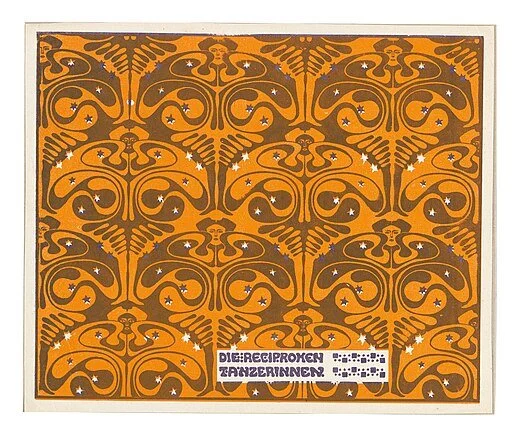Wiener Werkstätte: Exploring an Artistic Legacy
Introduction
Last month, we took a fascinating journey through various historical art movements, and I found myself wanting to dive deeper into one that truly resonates with me: the Wiener Werkstätte. This influential art school has left a profound mark on the realms of art, design, and craftsmanship, and I'm excited to share its rich history, notable members, and enduring influence with you.
The Wiener Werkstätte: A Fusion of Art & Craftsmanship
Founded in 1903 by Josef Hoffmann and Koloman Moser, the Wiener Werkstätte, or Vienna Workshop, emerged as a beacon of artistic innovation at the turn of the 20th century. This groundbreaking school aimed to bridge the gap between fine and applied arts, seamlessly integrating artistic principles into everyday objects and environments.
Die Quelle 1901, Die Tänzerinnen - Koloman Moser
What I love about the Wiener Werkstätte is its emphasis on craftsmanship. This movement elevated traditional artisanal techniques to new heights, creating exquisite pieces across a variety of disciplines—from architecture and furniture design to textiles, ceramics, and graphic design. The versatility and creativity of its members truly showcased the beauty of integrating art into daily life.
Notable Members and Their Contributions
The Wiener Werkstätte was home to a constellation of remarkable artists and designers, each leaving a unique legacy in the art world. Here are a few prominent figures whose contributions continue to inspire me:
Josef Hoffmann: As a founding member, Hoffmann played a pivotal role in shaping the artistic direction of the Wiener Werkstätte. His clean lines, geometric forms, and harmonious design principles perfectly embodied the essence of the movement.
Koloman Moser: Moser’s artistic prowess spanned multiple mediums, including painting, graphic design, textiles, and furniture. His innovative use of patterns, colors, and decorative motifs helped define the distinctive aesthetic of the Wiener Werkstätte.
Gustav Klimt: Though not an official member, Klimt’s artistic vision shared a deep affinity with the Wiener Werkstätte. Renowned for his ornate patterns and sensual symbolism, Klimt’s influence echoed throughout the movement, leaving an indelible mark on decorative arts.
Dagobert Peche: Peche brought a whimsical and playful spirit to the Wiener Werkstätte with his intricate patterns and fantastical designs. His imaginative approach added a touch of enchantment to the diverse artistic output of the school.
The Enduring Influence of the Wiener Werkstätte
The artistic innovations and philosophies of the Wiener Werkstätte continue to resonate with artists, designers, and art enthusiasts worldwide. Their emphasis on merging art with daily life, prioritizing craftsmanship, and celebrating the marriage of form and function remains relevant in contemporary practices.
As an artist and author, I find myself constantly inspired by the Wiener Werkstätte. Their use of grids, bold patterns, and interdisciplinary integration have shaped my own creative journey. In my book, Treasure Found: An Art Journey, I explore the power of artistic expression and share personal insights to help others unlock their creative potential.
Conclusion
The Wiener Werkstätte stands as a testament to the transformative power of art, design, and craftsmanship. By diving into their rich history and exploring the artistic contributions of their notable members, we gain a deeper understanding of the creative forces that have shaped our world.
Textile sample, Dagobert Peche, 1920
Join me in celebrating the Wiener Werkstätte and their enduring influence on the artistic landscape! Dive into the captivating pages of Treasure Found: An Art Journey to uncover the treasures within your own creative spirit and embrace the transformative power of art. Let the Wiener Werkstätte inspire and guide you on a lifelong journey of artistic exploration and self-discovery.
















